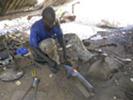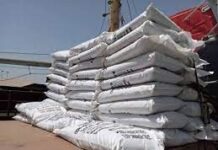This Column is meant to monitor and report on issues that concern the people of the rural communities, in terms of how their development is hindered or facilitated. Rural development is a process that aims to improve the standard of living of people, living in rural communities.
According to Robert chambers, rural development is a strategy to enables a specific group of people, poor rural women and men, gain for themselves and their children, more of what they want and need.
This involves helping the poorest among those who seek a livelihood in rural communities, to demand and control more of the benefits of rural development. The group includes small scale farmers, tenants and the landless.
Thus, the term rural development may be used to imply any one of the above-mentioned connotations.

To avoid the ineffective floundering among the myriad of definitions, we shall define rural development as a process that leads to the sustainable improvement in the quality of life of rural people, especially the poor.
According to Lamin Sambou Kinteh, for rural development to be meaningful and realizable, the trinity of development must be present and these are electricity, water and rural infrastructural development such as roads, industries, schools, health facilities etc.
It is essential to note at this state, that rural poverty in The Gambia is strongly linked to economic concerns and that the main causes and characteristics of rural poverty in the Gambia are remote locations of communities with poor infrastructure and services such as paved roads, markets and safe drinking water; lack of skills and capacity building centers, and a disproportionate incident of illiteracy and poor skills among women and youth, limited access to inputs, financial services, markets and value chains and reliance on traditional farming techniques. Thus, the rural-urban migration.

Unfortunately, poverty is rife in the rural areas. Over eighty percent of rural families live on incomes below the designated poverty line, in contrast to only forty percent of urban families. Thus it is imperative that any programme aimed at improving the standard of living and long-term economic stability in rural areas should hinge itself on the premise of further developing and sustaining agriculture, the resource base from which rural incomes are derived.
Young people1 in rural areas are the future of agriculture and other rural industries, but often lack the guidance and support necessary to fully contribute to the development of their communities, thereby fuelling the vicious cycle of rural underdevelopment and poverty. Acknowledging and addressing their needs and aspirations is vital for local and national growth.
Youth in rural areas of many developing countries are involved in a range of household-based and farm and off-farm activities, where the main problem they face is that of under-employment as these activities often have low rates of return.
-Conservative views and family structures consisting of large extended households may silence the voice of rural youth, especially young women, thereby restricting their access to waged labour and other economic resources, such as land and financial tools to open their own businesses, as well as decision-making.
– Poverty, lack of voice, and of decent work opportunities may contribute to a sense of hopelessness that can discourage young people.
-Young rural women are doubly disadvantaged as a result of traditional gender-based stereotypes and gender-based division of labour especially persistent in rural areas, which limit, in particular, their access to education and decent, remunerative work.




















